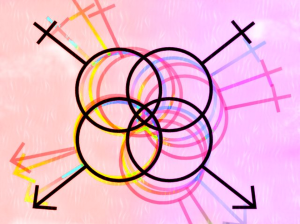By Kylie McCuiston
I was first introduced to the term “Boston Marriage” in my first-year English class, Gender and Sexuality in Nineteenth Century Literature, when we were reading a short story titled “Two Friends” by Mary E Wilkins Freeman. It was a story about two women who lived together their entire lives independent of any male support. The two were clearly more than friends, but due to the constricting nature of the time period, their romance was only hinted at through veiled descriptions and the story ended with one of them dying (playing in, no doubt, to the “bury your gays” trope).
While this story sounds radical for the time period, it was common enough to merit a term for it. The term “Boston Marriage” derives from Henry James’ book The Bostonians, which was the first account that described this sort of phenomenon that was occurring. Usually the two women that lived together did so out of a mutual benefit, so that they could pool their assets together and live the lives they wanted to live without the limitation that would be placed on them if they were to enter in to a traditional marriage.
Though this term was in use during the nineteenth century, it was meant only to convey the fact that the women were living together, not necessarily that they were lovers, which is why this type of arrangement was accepted with little criticism. Looking back, historians can make conjectures as to whether some of these Boston Marriages were sexual or romantic in nature but we can never be certain. It would be remiss to dismiss them all as platonic however. While some were most likely sexual in nature, some were also simply romantic in nature and could be described as a form of asexuality back then.
Mary E Wilkins Freeman based most of her stories off of personal experiences and was herself in a Boston marriage with a woman named Mary Wales. The two lived together for almost two decades. Within this climate, Mary E Wilkins Freeman was able to write and publish freely and became a successful, independent author. Her disdain for traditional marriage is mirrored in another feminist short story of hers titled “A New England Nun” which tells about a woman who refuses to marry because she is content to live entirely independent for the rest of her life.
Whether or not the women in these Boston Marriages were lesbian or not, they at least demanded an early form of independence that we do not typically associate with the nineteenth century women. Many were independent writers and artists with their own flourishing careers and like Mary E Wilkins Freeman, made works that mirrored this independence.

